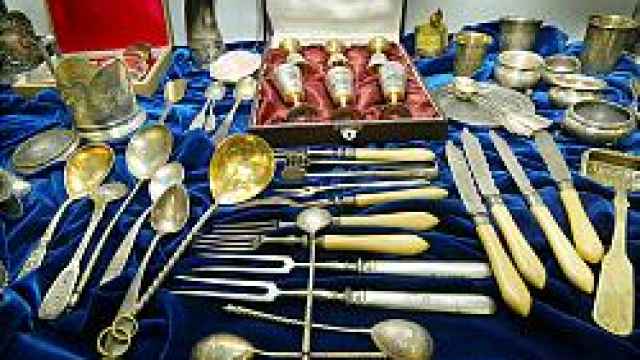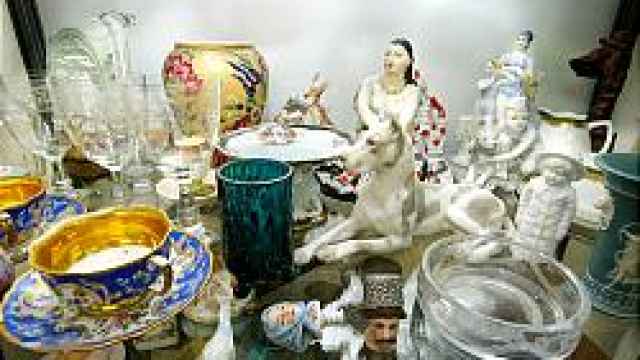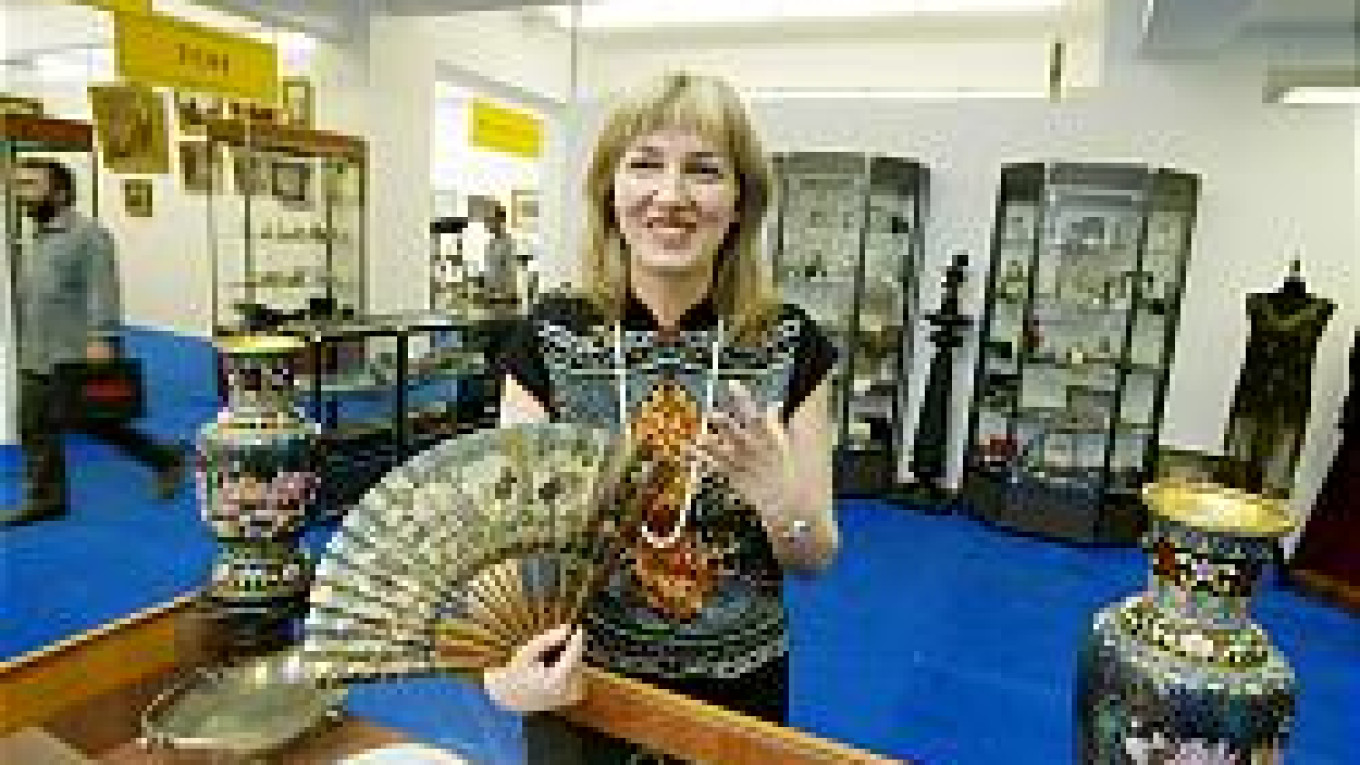And it will become even more accessible when the country's first antique mall opens Friday on the fifth floor of the enormous Detsky Mir department store on Lubyanka.
Antique dealers and shop owners say their clientele has grown along with the country's economy, as collectors with middle-class incomes join Russia's new millionaires as regular customers for Russian antiques.
"The number of clients has definitely increased," said Mikhail Kudryavtsev, one the owners of Antikvar on Bolshaya Nikitskaya Ulitsa.
As demand for antiques has increased, so too has the number of stores, from three or four in Moscow in the early 1990s to more than 300 today, dealers said.
''We are having to fight for our business,'' Kudryavtsev said.
The new mall, called the Central House of Antiques, should intensify the competition, especially for middle-class consumers.
"This will be a real experiment with so many dealers in one place," said Olga Romanova, one of about 15 dealers who have already rented space in the mall, and a specialist in Russian and European porcelain and glassware, decorative arts, wooden boxes and costumes.
The number of antique stores has risen partly as more and more collectors become dealers. Last year, the Culture Ministry ended a requirement for all dealers to go through strict background checks to obtain a license. Now dealers need only to register as a small business.
 Vladimir Filonov / MT Antique silver tableware has become more affordable to middle-class customers. | |
"The middle classes are still cautious about what they are buying," she said. "They don't know what to buy, and they are lost."
To better find their way, some have turned to a handful of antique schools for lessons in Russian art history, estate life and culture.
Schools such as Znatochestva, on Ulitsa Gilyarovskogo, offer higher education diplomas after courses lasting six-months to 2 1/2 years. Znatochestva turns out about 40 graduates each year. Many, like Romanova, go on to become dealers, consultants or appraisers.
The school was started six years ago by Vitaly Vorobyov, a former Slavic expert at the Culture Ministry and now the general director of Atribut, an antique appraisal firm.
The growth in the market is exciting, but government restrictions are keeping it from reaching its potential, Vorobyov said.
"The antiques market today is an interesting phenomenon," he said "But it is still young and unstable."
To help the market mature, the Culture Ministry should relax its strict customs regulations on exporting antiques, he added.
Buyers wishing to take art or antiques more than 50 years old out of the country must have the item assessed by the ministry, which often levies a steep tax on exportable antiques, sometimes doubling the price.
Liberalizing the regulations would allow more Russian antiques to flow into the international market, where worldwide trade would drive up their prices, Vorobyov said.
If the government relaxed the rules, more tourists wandering up Bolshaya Nikitskaya from Red Square would buy instead of simply browsing in his shop, Kudryavtsev said.
The crowded, narrow rooms of Kudryavtsev's small shop are scattered with stacks of old books, paintings and 19th-century tables and chairs. Silver spoons, pocket watches and porcelain dishes lie awaiting discovery in glass cases.
The wealthiest clients still make up about half of his business, buying the shop's most expensive pieces, Kudryavtsev said. The rest of his clients, middle-income buyers and foreigners, stick to items priced at $5,000 or less, he said.
High-end Russian antiques are mainly those that tsars and nobles commissioned European experts to make. The less expensive range, favored by many of today's collectors, includes copies of these pieces, reproductions made in porcelain and furniture-making workshops on wealthy landowner's estates by serfs and peasants, dealers said.
 Vladimir Filonov / MT Sticker prices on certain antiques start below $100. | |
"There are three kinds of antique buyers: New Russians, collectors and those with enough money to buy something that catches their eye," he said.
While some of the more expensive pieces have passed them by, middle-income collectors, some of whom began their hobby on a small Soviet salary, see a positive side of the blossoming interest in Russian antiques.
Thirty-five years ago Yelena Yurova, a retired physicist, and her family began collecting beaded embroidery, popular women's handiwork on estates in the 18th and 19th centuries. Her collection -- housed among the antique furnishings of her three-room apartment on Frunzenskaya Naberezhnaya -- is the largest in the country, and her articles on beadwork have appeared in several of Russia's leading antique magazines.
Yurova watched from the sidelines in the early 1990s as expensive pieces went to buyers who saw impressive price tags but may not have understood the quality of the pieces.
"After perestroika, New Russians understood absolutely nothing about the antiques they were buying," Yurova said. "But now new collectors are beginning to read books and articles and ask questions."
A Message from The Moscow Times:
Dear readers,
We are facing unprecedented challenges. Russia's Prosecutor General's Office has designated The Moscow Times as an "undesirable" organization, criminalizing our work and putting our staff at risk of prosecution. This follows our earlier unjust labeling as a "foreign agent."
These actions are direct attempts to silence independent journalism in Russia. The authorities claim our work "discredits the decisions of the Russian leadership." We see things differently: we strive to provide accurate, unbiased reporting on Russia.
We, the journalists of The Moscow Times, refuse to be silenced. But to continue our work, we need your help.
Your support, no matter how small, makes a world of difference. If you can, please support us monthly starting from just $2. It's quick to set up, and every contribution makes a significant impact.
By supporting The Moscow Times, you're defending open, independent journalism in the face of repression. Thank you for standing with us.
Remind me later.


